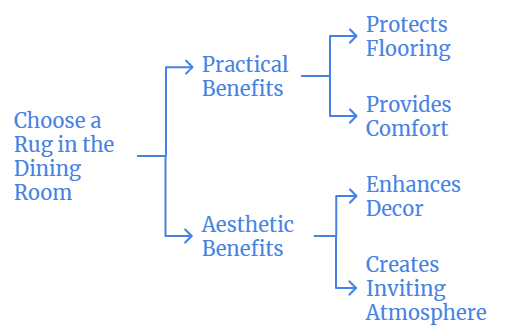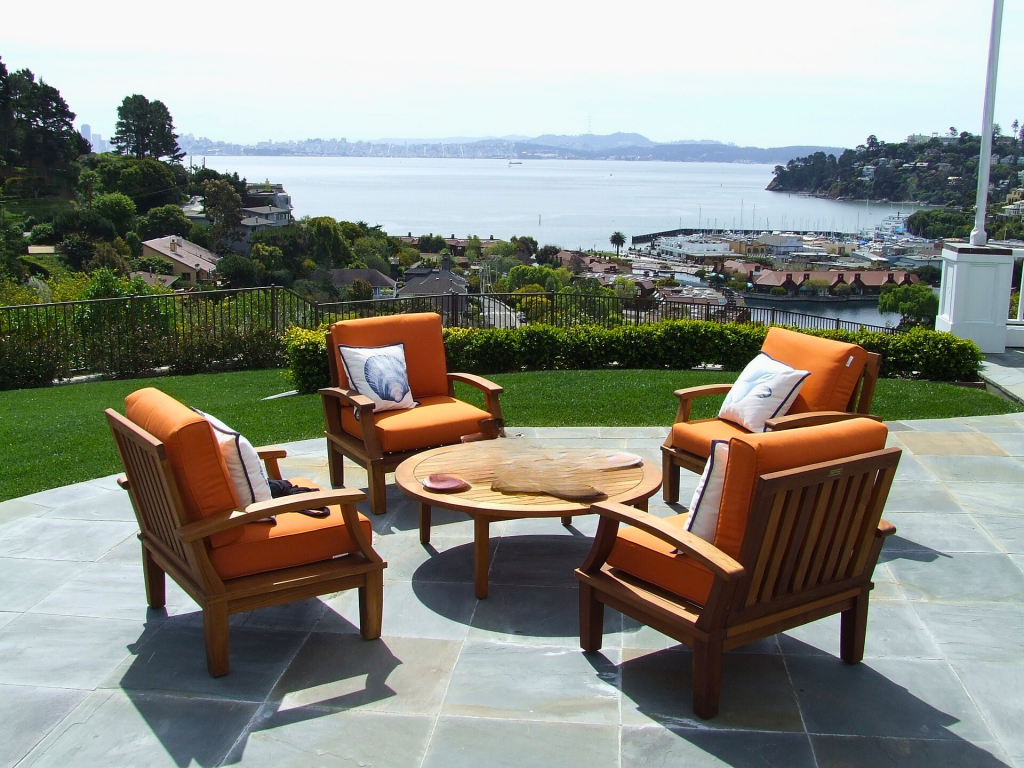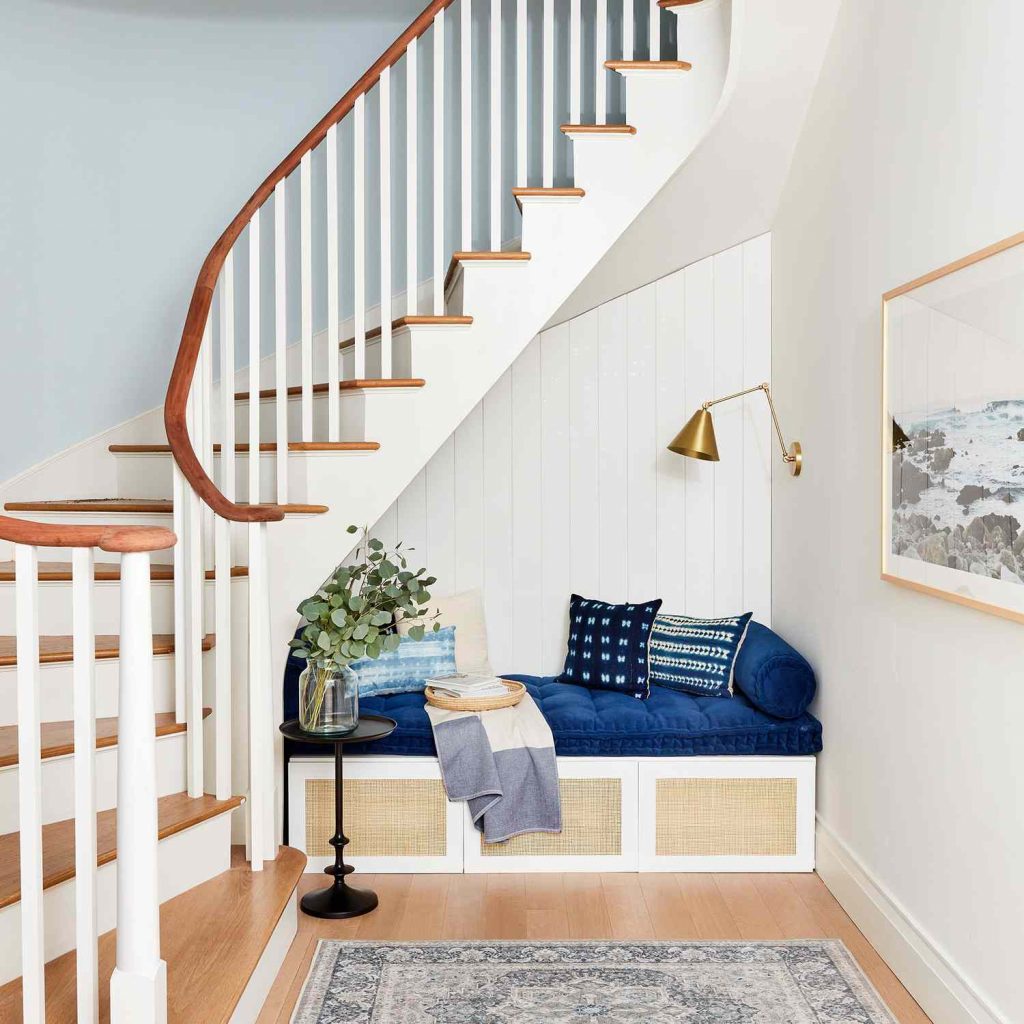Contents
- 1 Does Your Dining Room Need a Rug
- 2 Why Choose a Rug in the Dining Room?
- 3 How to Pick the Perfect Rug for Your Dining Room
- 4 Dining Room Rug Mistakes You Want to Avoid
- 5 How to Pair Your Rug with Various Dining Room Styles
- 6 What Are Other Options for Dining Room Rugs?
- 7 (FAQ) You May Have About Dining Room Rugs
- 8 Conclusion:
Does Your Dining Room Need a Rug
A rug can transform your dining room’s look and feel. It brings warmth, color and comfort. The real question is, do we need it? A rug is a necessary element for some, and for others, it’s a bare-the-floor business. This article will answer all your questions and help you decide whether or not you need a rug for your dining room, its benefits, how to pick one, and maintenance tips. Read more about Cozy Boho Bedroom Western Ideas
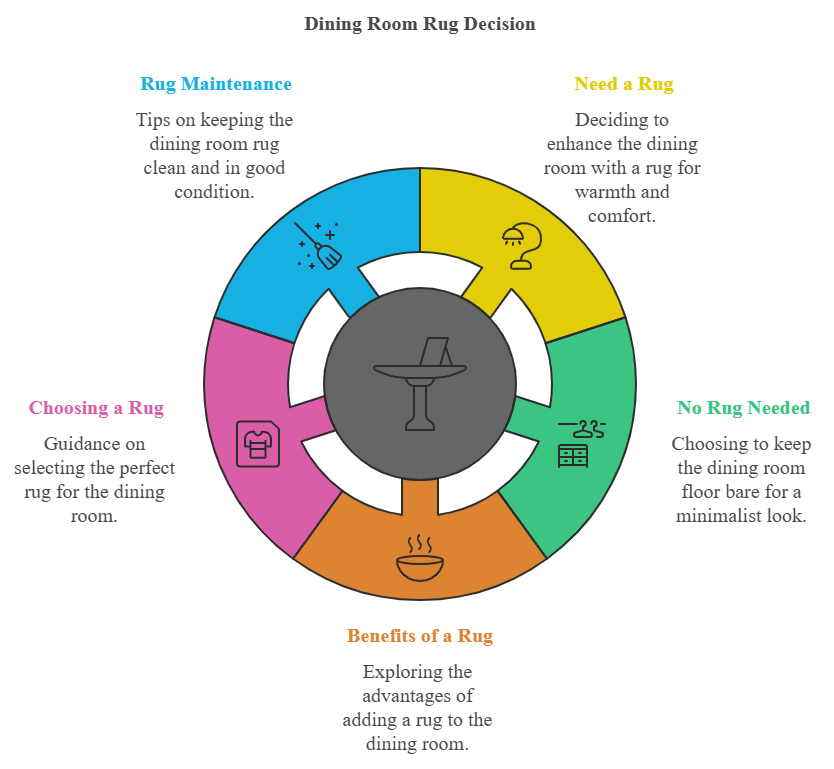
Why Choose a Rug in the Dining Room?
Rugs aren’t just decorative. They have both practical and aesthetic benefits in your dining room. A carefully selected rug can make your dining space more homey and inviting. It also helps to protect your flooring from damage, especially in high-traffic areas. In this article, we are going to explore some reasons why introducing a rug can be a great choice for your space.
The Aesthetics of Dining Room Rugs
- A rug can immediately elevate your dining room. Rugs add texture and color, making an otherwise plain space feel special. If you choose a statement-making pattern or stick to a neutral tone, the rug can unify the room’s design. A well-priced stylish rug helps ground your furniture and creates a sense of togetherness. There is woven patterns, shag piles, flatweaves, and what have you, so in short, there’s a rug to fit every decor, be it traditional or modern. Learn more about How much does it Cost to Paint Kitchen Cabinets.
Comfort and Protection
- Hard-floored dining rooms can be chilly and uninviting. A rug adds comfort underfoot, making the room feel more welcoming during long meals and entertaining. Besides comfort, rugs also protect your floor from spills, stains, as well as scratches. They also act as a mini wall against dirt, keeping your floors cleaner longer. This additional level of protection is a huge help in high-traffic areas where herd migration patterns may occur (literally, when chairs are pulled away from the table or pushed back in).
How to Pick the Perfect Rug for Your Dining Room
Choosing the right rug is a key part of both function and aesthetics. The size material and design should match your dining room’s layout and aesthetic. A nicely chosen rug can warm the room up, too, and add a homey feeling. Want to learn the important things to keep in mind when shopping for a rug for your dining space? Choosing wisely will upgrade the look and feel of your dining room.
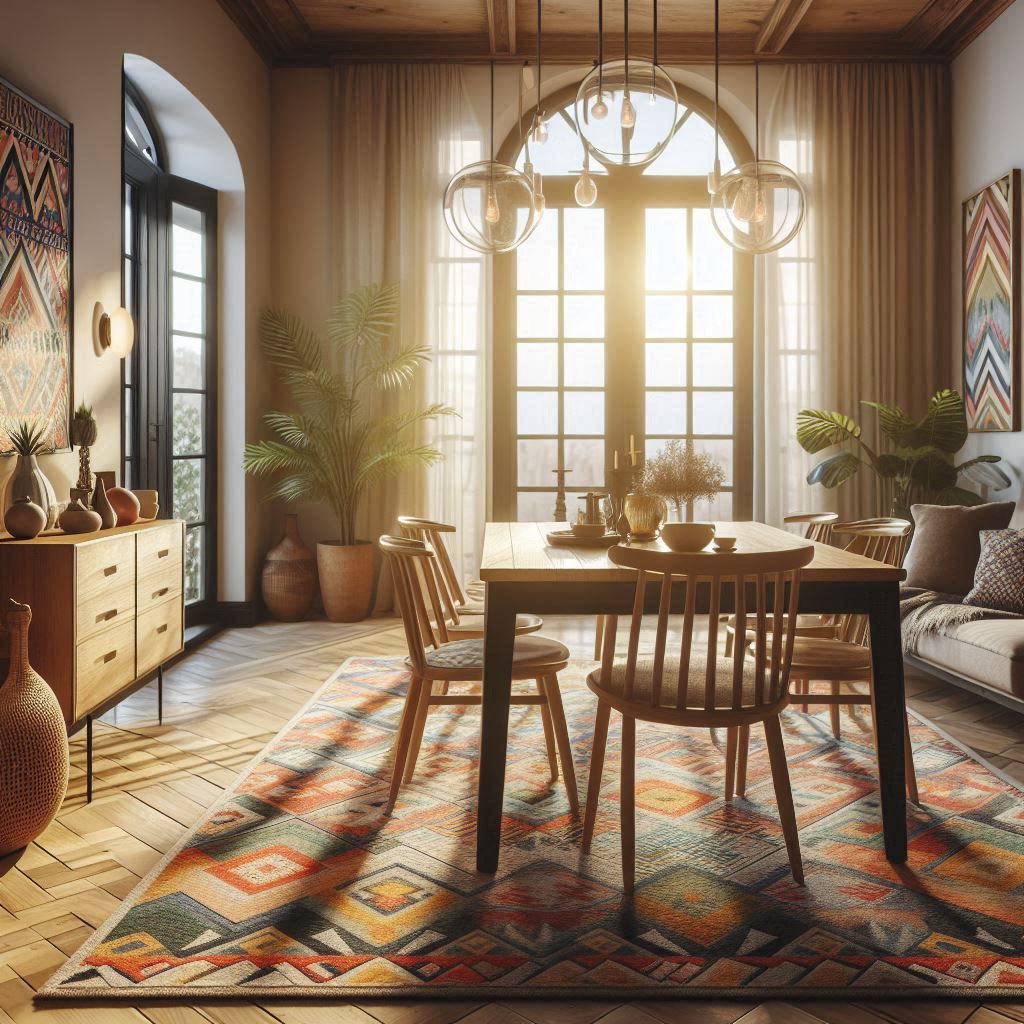
Choosing the Right Size of Dining Room Rug
- What to be sure to include: Perhaps the biggest factor you’ll want to get right is the size of the rug. A too-small rug can render the room cooped up, while one that’s too large can dominate the space. In general, you’ll want a rug that extends 24-30 inches beyond the ends of your dining table. This gives chairs a great range of motion, as they easily slide in and out without snagging the edge of the rug. The size of your rug can affect your dining area’s integrity; proper sizing will ensure that it aids the function of your dining area. Checkout our Outdoor Decorating.
How to Choose Rug Materials that Work for Your Dining Room
- Rugs are made from many materials, which provide different advantages. Wool is durable and stain-resistant, making it great for high-traffic areas. Cotton may be softer and cheaper but may be harder to keep clean. Synthetic fabrics such as nylon or polypropylene tend to repel stains and are often cost-efficient, so they are great for those with pets and/or young children. Which material you choose will depend on how much upkeep you’re willing to do and the traffic in your dining area.
Dining Room Rug Mistakes You Want to Avoid
There are a handful of dining room rug no-nos if you will. Such errors can compromise the beauty and use of the rug. Knowing what they are helps you avoid costly mistakes and has you set-up a more comfortable dining environment. In this section, we will discuss the mistakes everyone makes and advice on how to avoid them. Here are some tips to ensure you are getting the most from your dining room rug.
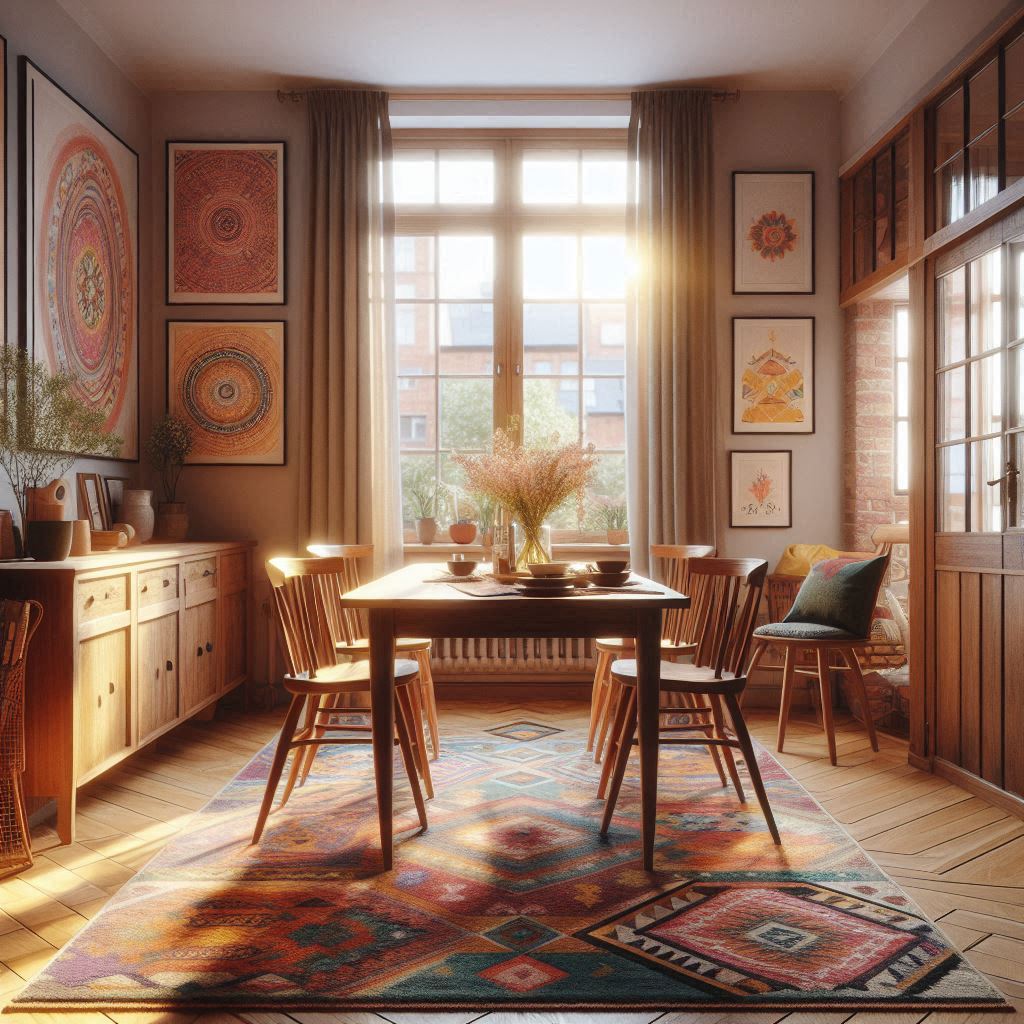
Don’t Go for the Wrong Size Rug
- Rug size is one of the most common mistakes people make. If a rug is too small, it can create a disjointed feeling and make the dining room feel unfinished. And a rug that’s too big can overpower the area and make it feel cramped. The trick is to measure your dining table and leave enough space around it so that a chair can be pulled out without sliding off the rug. A well-fitting carpet can elevate the room’s aesthetics and function.
You Are Not Cleaning Your Rug Correctly
- What to say: To keep rugs looking their best and lasting longer, they need to be cared for regularly. Others ignore this and get ended up with faded or stained rugs. Vacuuming is an essential part of preventing dirt and dust from building up. If you have a wool or other natural fiber rug, it may need a deeper cleaning every so often. Also, if food or drink spills on the rug, take corrective action as pranging as you can to avoid stains from becoming permanent.
How to Pair Your Rug with Various Dining Room Styles
Types of Dining Room Rugs: Contrary to popular belief, rugs can be paired with both modern and traditional dining room decorations. Selecting a carpet that complements your dining area design will provide a cohesive appearance. In this section, we’ll guide you on rug matching with iconic décor styles. Whether your dining room is minimalist or more traditional, there’s a rug that suits and completes the look.
Modern Dining Room Rugs
- What to include: Modern dining rooms often have crisp lines, neutral colors and minimalist designs. Modern dining room rugs should feature minimal patterns or solid colors. Rugs with geometric shapes or subtle textures fit neatly into these spaces. A minimalist rug won’t clash with the sleek furniture but highlights the overall look. Opt for a rug that harmonizes with the design of your modern dining room for a balanced and chic feel.
Traditional Dining Room Rugs
- What’ll you do: Dining rooms usually address the time-honored and classical decorative style. A traditional rug with deeper colors and intricate designs can add beauty to a traditional dining room. Rugs: An area rug in a Persian, floral or oriental style are great option. These rugs bring warmth and some personality to the area while coordinating with vintage or antique pieces. Again his team also layered a rug with a traditional design to unify the space, imparting a sense of warmth and sophistication.
What Are Other Options for Dining Room Rugs?
Overview: Using a rug in your dining room isn’t for everyone, and that’s perfectly fine. Alternatives that still offer comfort and style. We are going to discuss some other options to decorate your dining area in this section. These alternatives can help make your space feel cozy and functional without relying on a rug.
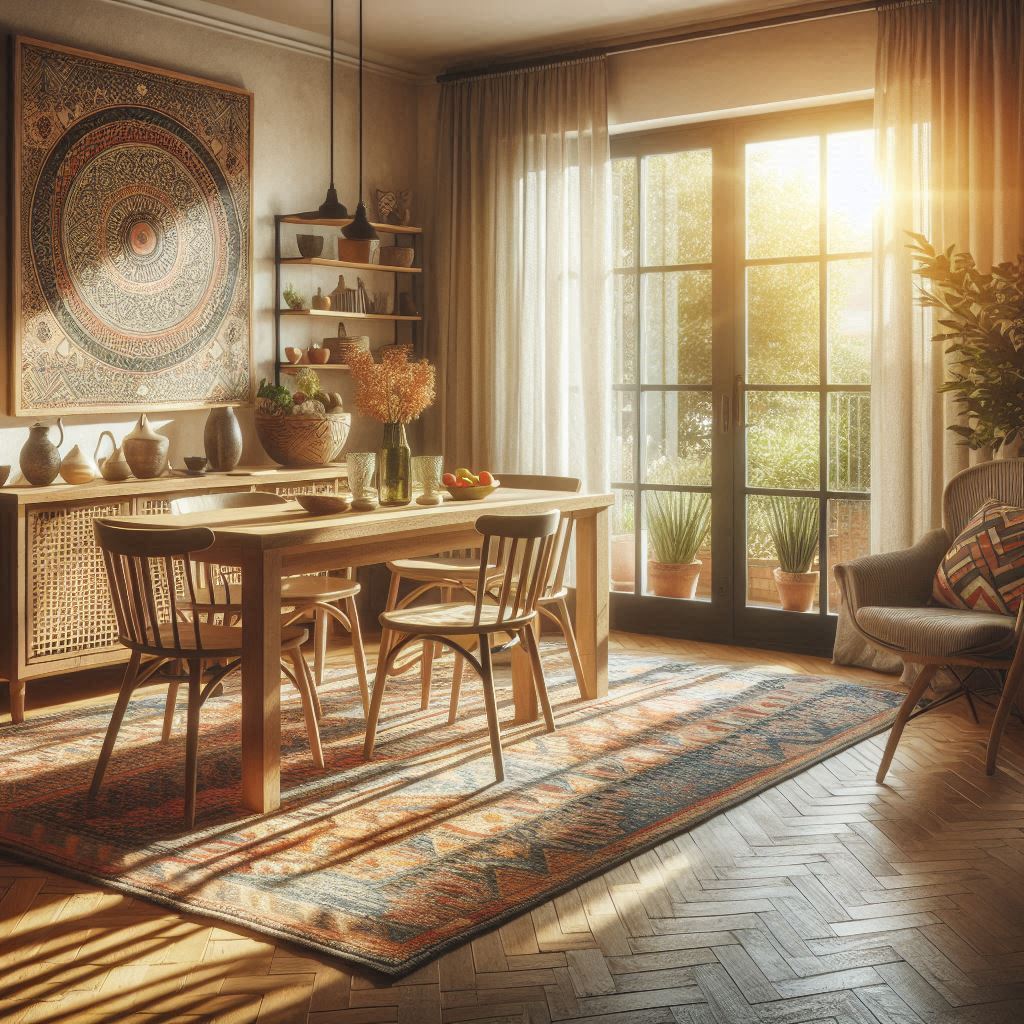
Hard Flooring Options in Place of Rugs
- What to write: If you don’t want to pull a carpet, then hard flooring options such as hardwood or tile are a great option. These are low-maintenance, durable materials that be resistant to the rigors of everyday living. Hardwood floors provide warmth in a space, and tile floors can be wiped clean in the event of a spill. They won’t provide the softness of a rug, but these options can still lend the space an attractive and polished feel. Select a hard floor that suits your: style; and is tough enough for the rigors of your dining area.
Placing Smaller Counter Mats
- What to write: Small rugs can work when other options aren’t an option. These mats add texture and color without requiring a lot of real estate. They are particularly effective in smaller dining rooms or when a more minimalist aesthetic is desired. Mats, on the other hand, tend to be easier to clean and maintain than bigger rugs. You could do one or two small mats in front of the dining chairs, or a small one under the centerpiece for decoration.
(FAQ) You May Have About Dining Room Rugs
We answered some of the most frequently asked questions people have about dining room rugs. These frequently asked questions aim to clear up any confusion and offer additional tips for choosing and caring for a rug in your dining room.
What Size Rug Is Right for My Dining Room?
Size of rug: Note your dining table. As a rule of thumb, leave 24-30 inches around the table. This allows for easy movement of chairs on and off the rug without falling. For round tables, select a round rug that corresponds with the table’s dimensions. An area rug that is too small can render the room cramped and a rug that is too large can make space feel cramped.
How Can I Maintain My Dining Room Rug?
Cleaning your rug regularly is the secret to keeping it looking good. Vacuum it weekly to remove dirt and debris and spot clean spills immediately to prevent stains. If your rug is made of wool or another natural fiber, you may need to deep clean it every six months. If tougher stains or odors are still a problem, hire a professional cleaning service. With regular care, you can help keep your rug looking fresh and extend its life.
Should I have a rug under my round dining table?
Yes, round rugs can work for round tables. The rug must be large enough to fit at least the table and chairs. For cafes keeping a round table, round rugs work best, matching the table shape and balancing the overall look of the room. Just as with rectangular tables, the rug should extend beyond the chairs for comfort and maneuverability.
Conclusion:
Bottom line: whether or not you need a rug in your dining room is a matter of personal choice. A rug is great for adding comfort, style and protection to the space, but isn’t a must-have for every household. If you want a rug, select one that suits the size and design of your dining room. Whilst laying the floor makes your dining room beautiful, you can always look for other options if you are more fond of leaving the floor bare. Whatever you choose, ensure it’s compatible with your lifestyle and complements the space.
